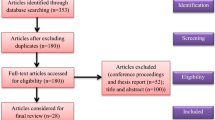Abstract
Certain rules and regulations are adapted to the linguistic production model to support the decision of human computer interaction using linguistic protection rule method. This paper proposes linear linguistic advanced structural modeling (LLASM) approach to develop weighted linguistic reasoning (WLR) algorithm for the purpose of reasoning and knowledge representation. In this article human computer interaction faces optimal flow and job Characteristics experience using individual computers in the workplace which helps to overcome the issues using LLASM in a variety of organizations with Robotic assistance for verbal and non-verbal sequence using humanoid robot. This model introduces global weight and local knowledge fuzzy rules to determine the optimal flow and job characterization problem faced in linguistic reasoning method. Here, The Weighted linguistic reasoning algorithm allows fuzzy rule-based expert systems with the help of the LLASM method to execute the intelligent and flexible knowledge reasoning model with robotic assistance. Finally, case studies are presented to show the effectiveness of the re-scheduling process which benefits the proposed method using the Linguistic reasoning model.








Similar content being viewed by others
References
Cariñena P, Bugarín A, Mucientes M, Díaz-Hermida F, Barro S (2002) Fuzzy temporal rules: a rule-based approach for fuzzy temporal knowledge representation and reasoning. In: Technologies for constructing intelligent systems 2, Physica, Heidelberg, pp 237–250
Chen WH (2010) Fault section estimation using fuzzy matrix-based reasoning methods. IEEE Trans Power Deliv 26(1):205–213
Chen D (2019) Fuzzy obstacle avoidance optimization of soccer robot based on an improved genetic algorithm. J Ambient Intell Hum Comput pp 1–12
Chiachío M, Chiachío J, Prescott D, Andrews J (2018) A new paradigm for uncertain knowledge representation by Plausible Petri nets. Inf Sci 453:323–345
Chiang W, Liu KF, Lee J (2000) Bridge damage assessment through fuzzy Petri net based expert system. J Comput Civ Eng 14(2):141–149
Hamed RI, Ahson SI, Parveen R (2009) From fuzzy logic theory to fuzzy Petri nets predicting changes in gene expression level. In: 2009 Proceeding of international conference on methods and models in computer science (ICM2CS), IEEE, pp 1–7
Kamala SPR, Justus S (2016) Towards MORK: model for representing knowledge. Int J Mod Educ Comput Sci 8(3):45
Konar A (1999) Artificial intelligence and soft computing: behavioral and cognitive modeling of the human brain. CRC Press, Boca Raton
Lee J, Liu KF, Wang YC, Chiang W (2004) Possibilistic Petri nets as a basis for agent service description language. Fuzzy Sets Syst 144(1):105–126
Li X, Lara-Rosano F (2000) Adaptive fuzzy Petri nets for dynamic knowledge representation and inference. Exp Syst Appl 19(3):235–241
Liu HC, Lin QL, Ren ML (2013) Fault diagnosis and cause analysis using fuzzy evidential reasoning approach and dynamic adaptive fuzzy Petri nets. Comput Ind Eng 66(4):899–908
Liu HC, You JX, You XY, Su Q (2015) Linguistic reasoning Petri nets for knowledge representation and reasoning. IEEE Trans Syst Man Cybern Syst 46(4):499–511
Liu HC, You JX, Li Z, Tian G (2017) Fuzzy Petri nets for knowledge representation and reasoning: a literature review. Eng Appl Artif Intell 60:45–56
Peng H, Wang J, PéRez-JiméNez MJ, Wang H, Shao J, Wang T (2013) Fuzzy reasoning spiking neural P system for fault diagnosis. Inf Sci 235:106–116
Pons P, Jaen J (2019) Interactive spaces for children: gesture elicitation for controlling ground mini-robots. J Ambient Intell Hum Comput pp 1–22
Ribarić S, Pavešić N, Zadrija V (2009) Intersection search for a fuzzy petri net-based knowledge representation scheme. In: International conference on knowledge-based and intelligent information and engineering systems, Springer, Berlin, pp 1–10
Scarpelli H, Gomide F, Pedrycz W (1996) Modeling fuzzy reasoning using high level fuzzy Petri nets. Int J Uncertain Fuzzy Knowl Based Syst 4(01):61–85
Shen VR (2006) Knowledge representation using high-level fuzzy Petri nets. IEEE Trans Syst Man Cybern Part A Syst Hum 36(6):1220–1227
Shih DH, Chiang HS, Lin B (2007) A generalized associative Petri net for reasoning. IEEE Trans Knowl Data Eng 19(9):1241–1251
Sun X (2019) Kinematics model identification and motion control of robot based on fast learning neural network. J Ambient Intell Hum Comput pp 1–10
Yang BS, Jeong SK, Oh YM, Tan ACC (2004) Case-based reasoning system with Petri nets for induction motor fault diagnosis. Exp Syst Appl 27(2):301–311
Ye Y, Diao X, Jiang Z, Du G (2009) A knowledge-based variance management system for supporting the implementation of clinical pathways. In: 2009 International conference on management and service science, IEEE, pp 1–4
Yue W, Gui W, Chen X, Zeng Z, Xie Y (2019) Knowledge representation and reasoning using self-learning interval type-2 fuzzy Petri nets and extended TOPSIS. Int J Mach Learn Cybern pp 1–22
Zhang G, Meng F, Jiang C, Pang J (2006) Using petri net to reason with rule and owl. In: The 6th IEEE international conference on computer and information technology (CIT’06), IEEE, pp 42–42
Author information
Authors and Affiliations
Corresponding author
Additional information
Publisher's Note
Springer Nature remains neutral with regard to jurisdictional claims in published maps and institutional affiliations.
Rights and permissions
About this article
Cite this article
Periyanayagi, S., Pazhani, A.A.J. & Sumathy, V. Enhanced humanoid assisted human interaction model based on linear structural modeling for knowledge representation. J Ambient Intell Human Comput 11, 6307–6318 (2020). https://doi.org/10.1007/s12652-020-01735-3
Received:
Accepted:
Published:
Issue Date:
DOI: https://doi.org/10.1007/s12652-020-01735-3




